Complete Solutions to NEET Questions of chapter KINETIC THEORY OF GASES AND THERMODYNAMICS of Class 11 book with complete answers and questions
| Class 11 | PHYSICS |
| Chapter | KINETIC THEORY OF GASES AND THERMODYNAMICS |
| A2Z | NEET Questions |
| Number Of Questions | 55 |
| Academic Year | 2023-24 |
A scientist says that the efficiency of his heat engine which operates at source temperature `127^(@)C` and sink temperature `27^(@)C` is `26%`, then
01:09View SolutionThe temperature of sink of Carnot engine is `27^(@)C`. Efficiency of engine is `25%`. Then temeperature of source is
02:37View SolutionEfficiency of a Carnot engine is `50%` when temperature of outlet is `500 K`. In order to increase efficiency up to `60%` keeping temperature of intake the same what is temperature of outlet?
03:01View SolutionAn ideal refrigerator has a freezer at a temperature of `-13^(@)C`. The coefficient of performance of the engine is `5`. The temperature of the air (to which heat is rejected) will be
03:02View SolutionA perfect gas at `27^(@)C` is heated at constant pressure to `327^(@)C`. If original volume of gas at `27^(@)C` is V, then volume at `327^(@)C` is
01:33View SolutionFor adiabatic processes `(gamma = (C_(p))/(C_(v)))`
01:27View SolutionIf the door of a refrigerator is kept open, then which of the following is true
03:07View SolutionAn ideal gas heat engine operates in a Carnot cycle between `27^(@)C` and `127^(@)C`. It absorbs `6 kcal` at the higher temperature. The amount of heat (in kcal) converted into work is equal to
04:03View SolutionThe equation of state for 5 g of oxygen at a pressure P and temperature T, when occupying a volume V, will be
02:01View SolutionOne mole of an ideal gas at an initial temperature of `TK` does `6R` joule of work adiabatically. If the ratio of specific heats of this gas at constant pressure and at constant volume is `5//3`, the final temperature of the gas will be
01:46View SolutionIf `300 ml` of a gas at `27^(@)C` is cooled to `7^(@)C` at constant pressure, then its final volume will be
01:31View SolutionA monoatomic gas is supplied heat Q very slowly keeping the pressure constant. The work done by the gas is
05:39View SolutionWhich of the following processes is reversible?
03:04View SolutionAn ideal gas heat engine operates in Carnot cycle between `227^(@)C` and `127^(@)C`. It absorbs `6 x 10^(4) cals` of heat at higher temperature. Amount of heat converted to work is
03:00View SolutionWhich of the following processes is reversible?
02:10View SolutionA Carnot engine whose sink is at `300K` has an efficiency of `40%`. By how much should the temperature of source be increased so as to increase its efficiency by `50%` of original efficiency.
02:52View SolutionThe molar specific heat at constant pressure of an ideal gas is `(7//2 R)`. The ratio of specific heat at constant pressure to that at constant volume is
02:05View SolutionAn engine has an efficiency of `1/6`. When the temperature of sink is reduced by `62^(@)C`, its efficiency is doubled. Temperature of the source is
05:03View SolutionIf Q, E and W denote respectively the heat added, change in internal energy and the work done in a closed cycle process, then
01:07View SolutionAt `10^(@)C`, the value of the density of a fixed mass of an ideal gas divided by its pressure is x. at `110^(@)C`, this ratio is
01:59View SolutionIn thermodynamic processes which of the following statement is not true?
01:11View SolutionThe internal energy change in a system that has absorbed `2 kcal` of heat and done `500J` of work is
01:42View SolutionIf `DeltaU` and `Delta W` represent the increase in internal energy and work done by the system resectively in a thermodynamical process, which of the following is true?
01:50View SolutionDuring an isothermal expansion, a confined ideal gas does `-150 J` of work aginst its surroundings. This implies that
02:07View SolutionWhen `1 kg` of ice at `0^(@)C` melts to water at `0^(@)C`, the resulting change in its entropy, taking latent heat of ice to be `80 cal//g` is
01:39View SolutionA mass of diatomic gas`(gamma=1.4)` at a pressure of 2 atomphere is compressed adiabitically so that its temperature rises from `27^(@)C` to `927^(@)C`. The pressure of the gas in the final state is
03:21View SolutionA thermodynamic system is taken through the cycle `ABCD` as shown in the figure. Heat rejected by the gas during the cycle is
 02:11View Solution
02:11View SolutionOne mole of an ideal gas goes from an initial state A to final state B via two processs : It first undergoes isothermal expansion from volume `V` to `3 V` and then its volume is reduced from `3 V` to `V` at constant pressure. The correct `P-V` diagram representing the two process in (figure)
01:54View SolutionAn ideal gas goes from State A to state B via three different process as indicate in the `P-V` diagram.
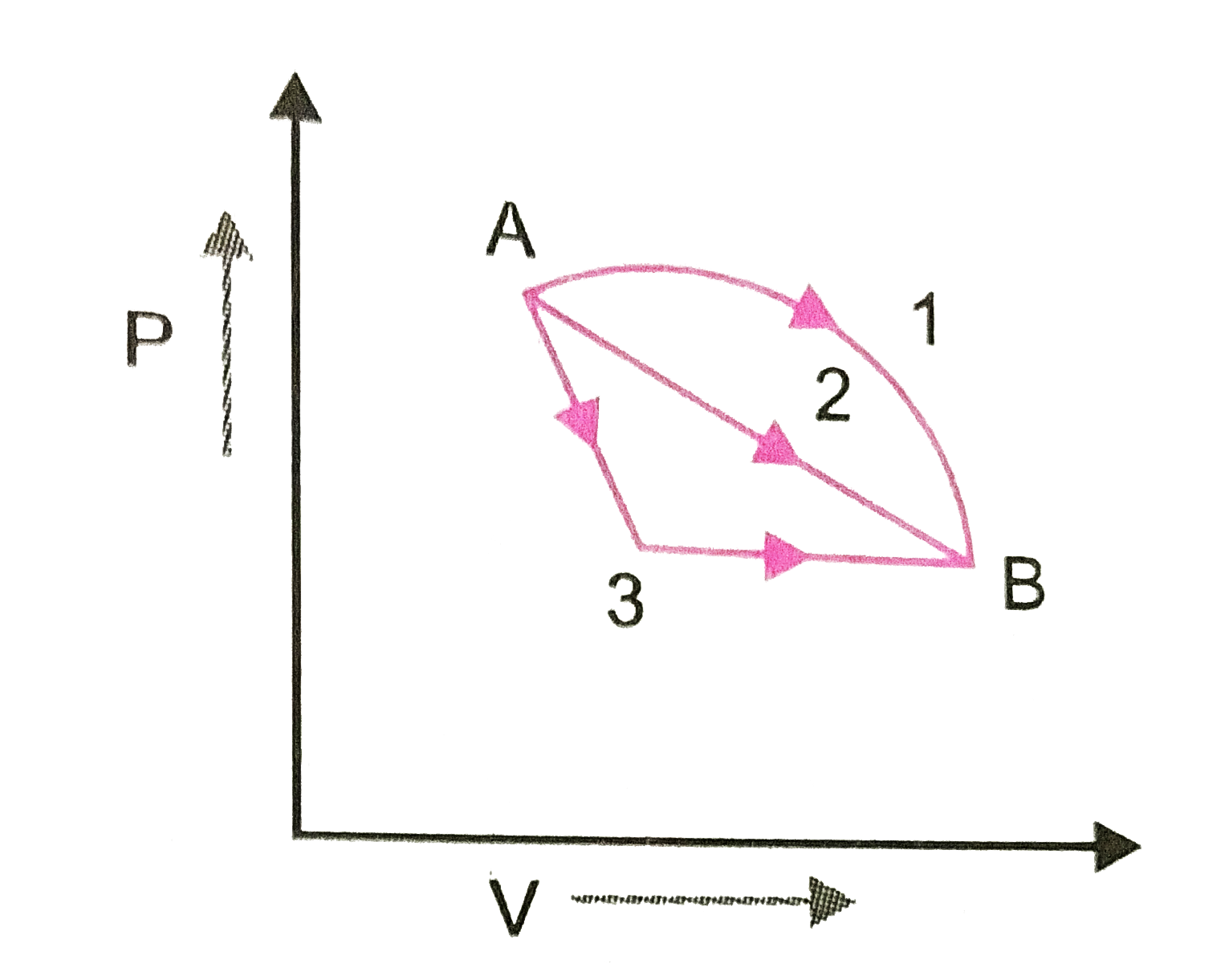
If `Q_(2), Q_(3)` indicates the heat absorbed by the gas along the three processes and `DeltaU_(1), DeltaU_(2), DeltaU_(3)` indicates the change in internal energy along the three processes respectively, then02:39View SolutionA gas is taken through the cycle `A rarrB rarr C rarr A`, as shown in figure, what is the net work done by the gas?
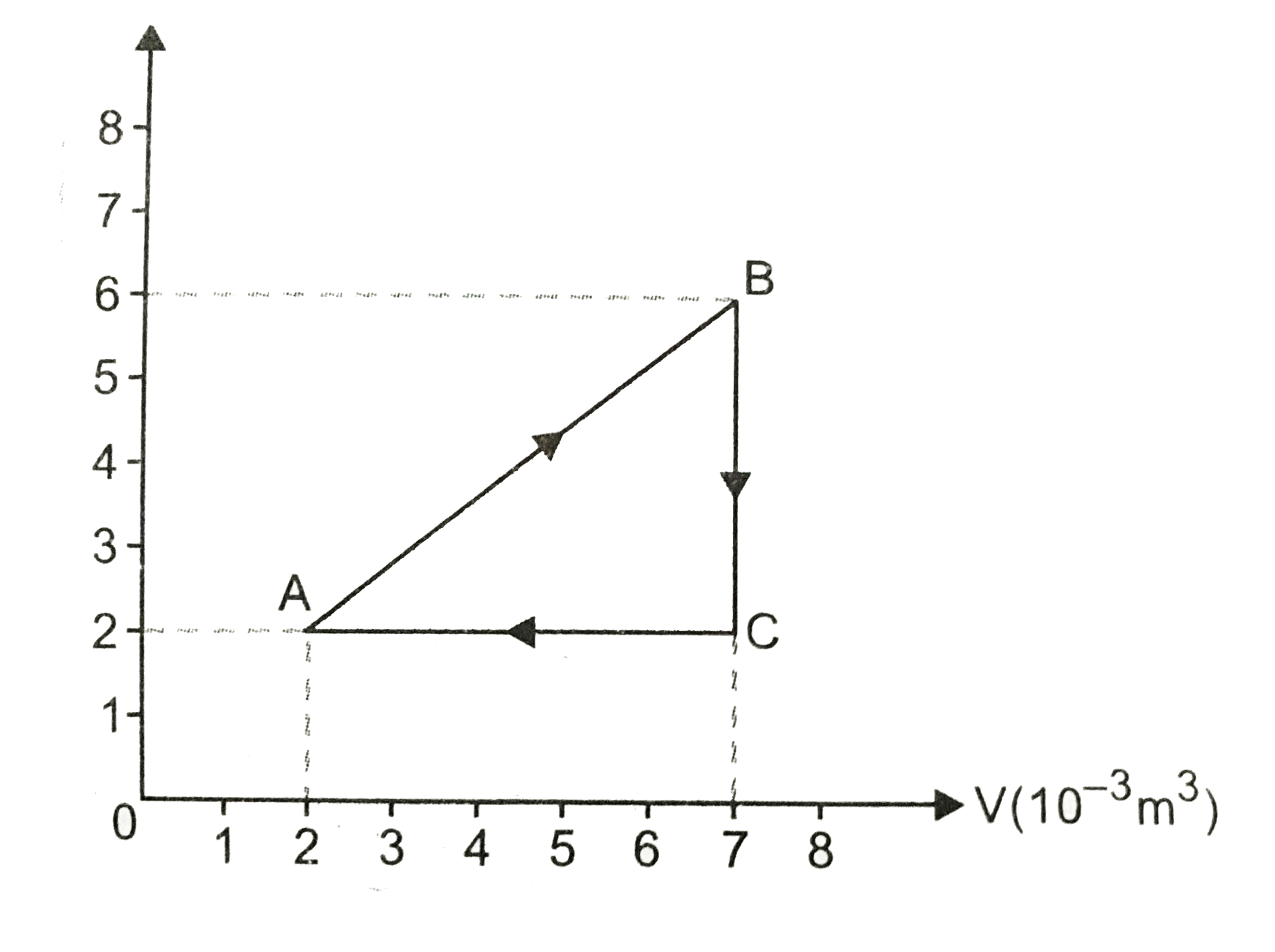 01:30View Solution
01:30View SolutionDuring an adiabatic process, the pressure of a gas is found to be proportional to the cube of its absolute temperature. The ratio `C_P//C_V` for the gas is
01:22View SolutionIn the given (V-T) diagram, what is the relation between pressure `P_(1) and P_(2)` ?
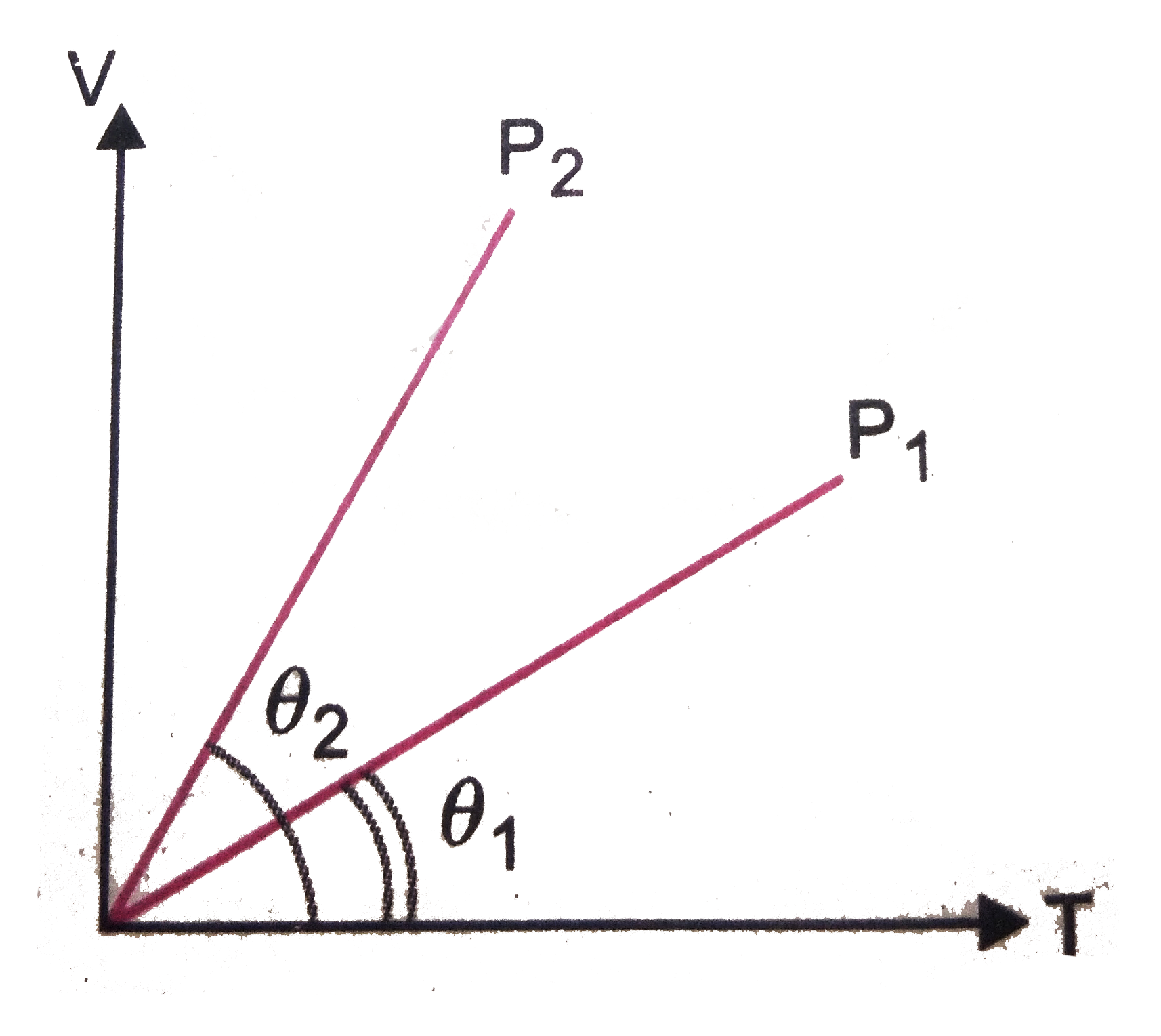 02:11View Solution
02:11View SolutionThe amount of heat energy required to raise the temperature of `1 g` of Helium at `NTP`, from `T_(1)K` to `T_(2)K` is
02:02View SolutionA thermodynamic system undergoes cyclic process `ABCDA` as shown in figure. The work done by the system is
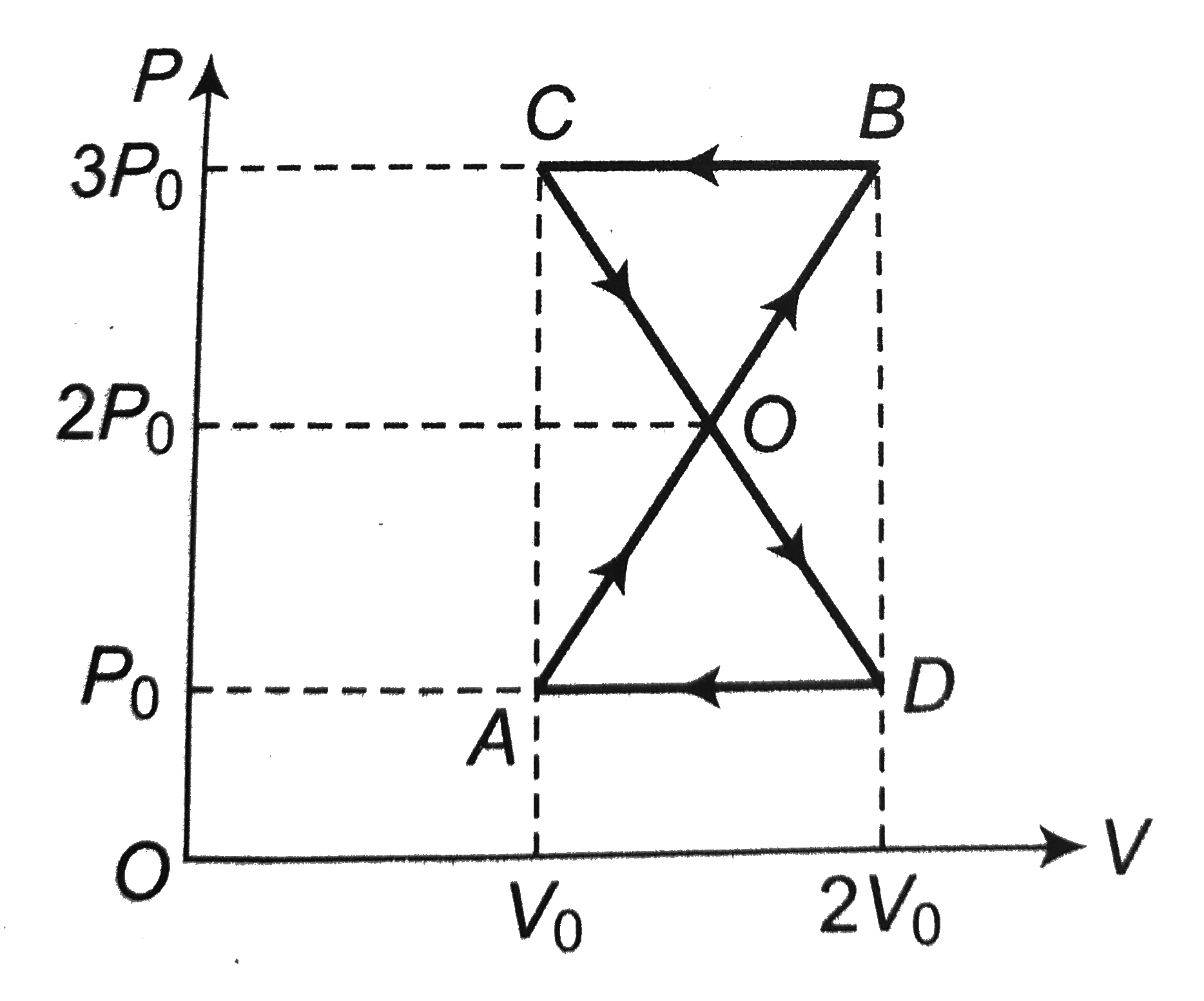 02:18View Solution
02:18View SolutionThe mean free path of molecules of a gas (radius r) is inversely proportional to
01:48View SolutionA Carnot engine, having an efficiency of `eta=1//10` as heat engine, is used as a refrigerator. If the work done on the system is 10J, the amount of energy absorbed from the reservoir at lower temperature is
01:53View SolutionIn (figure). shows two path that may be taken by a gas to go from a state A to state C
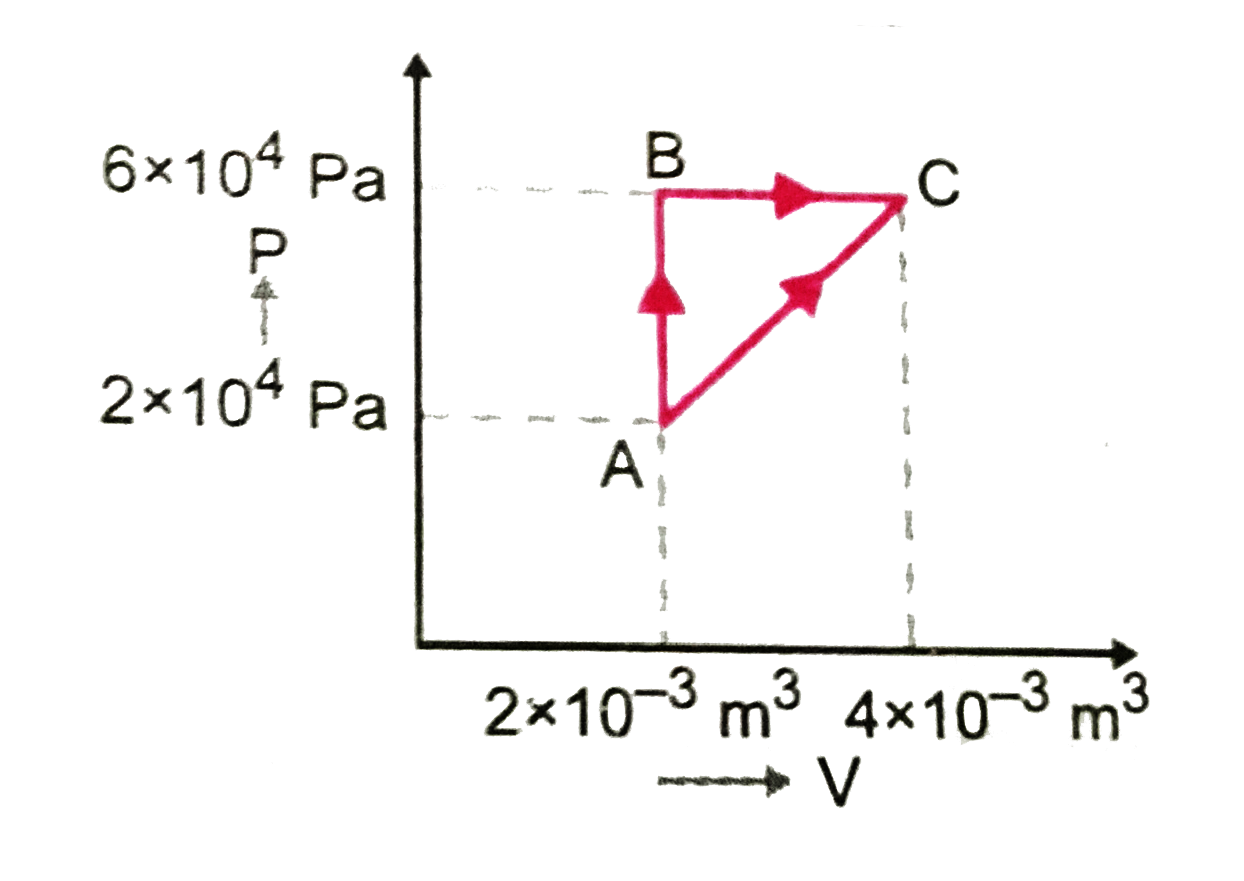
In the process AB, `400 J` of heat is added to the system and in process Bc, `100 J` of heat is added to the system. The heat absorbed by the system in the process AC will be03:00View SolutionOne mole of an ideal diatomic gas undergoes a transition from A to B along a path AB as shown in (figure). The change in internal energy of the gas during the transition is `(gamma=3//5)`
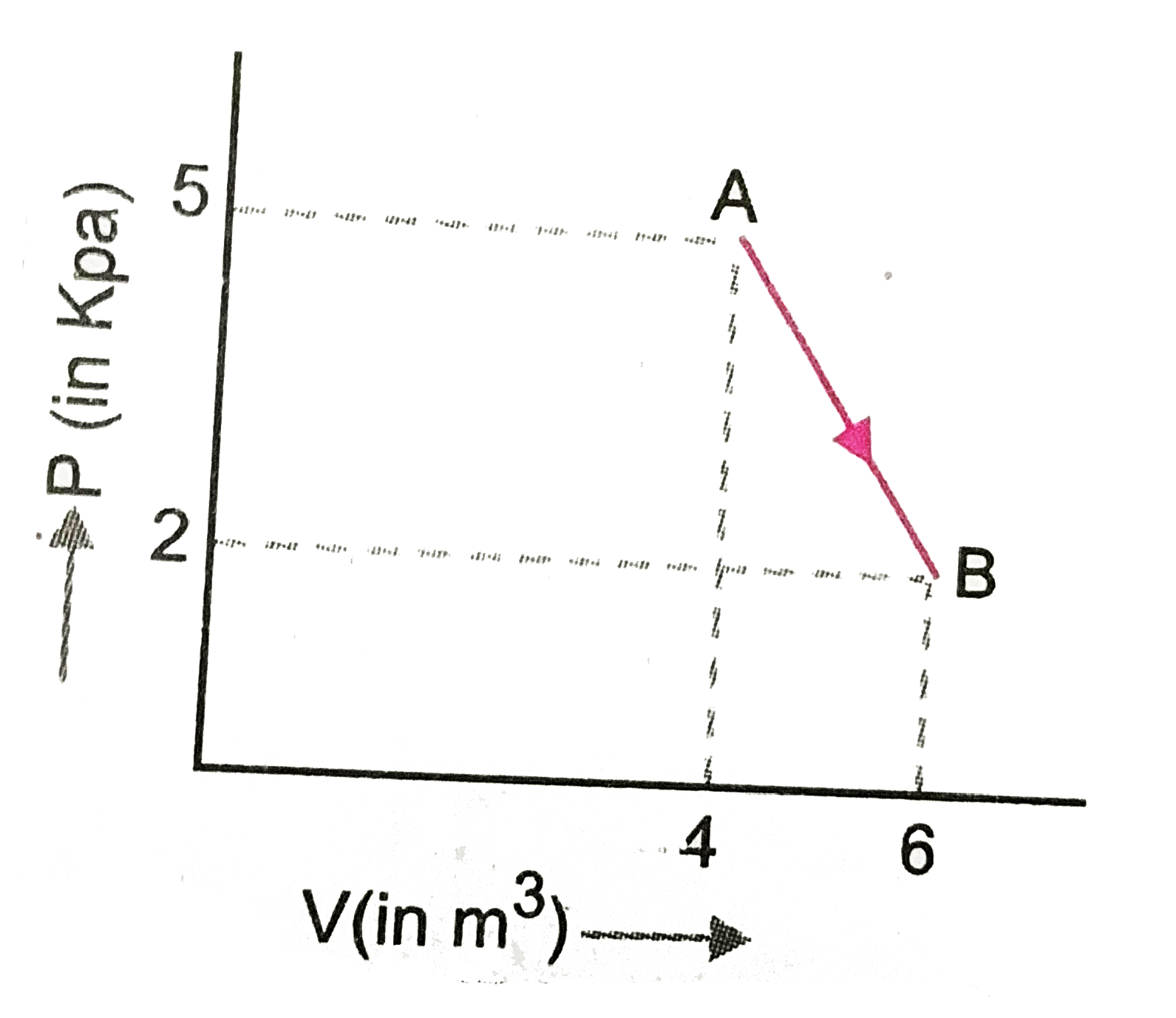 03:50View Solution
03:50View SolutionThe ratio of the specific heats `(C_(P))/(C_(upsilon)) = gamma` in terms of degrees of freedom is given by
01:17View SolutionTwo vessel separately contains two ideal gases A and B at the same temperature, the pressure of A being twice that of B. under such conditions, the density of A is found to be 1.5 times the density of B. the ratio of molecular weight of A and B is
02:50View Solution`4.0 g` of a gas occupies `22.4` litres at NTP. The specific heat capacity of the gas at constant volume is `5.0 JK^(-1)mol^(-1)`. If the speed of sound in this gas at NTP is `952 ms^(-1)`. Then the heat capacity at constant pressure is
02:15View SolutionThe coefficient of performance of a refrigerator is 5. If the temperature inside freezer is `-20^(@)C`, the temperature of the surroundings to which it rejects heat is :
02:07View SolutionAn ideal gas is compressed to half its initial volume by means of several peocesses. Which of the process results in the maximum work done on the gas ?
03:08View SolutionA refrigerator works between `4^(@)C` and `30^(@)C`. It is required to remove `600 calories` of heat every second in order to keep the temperature of the refrigerator space constant.The power required is (Take `1calorie= 4.2 J`)
02:08View SolutionThe molecules of a given mass of a gas have rms velocity of `200 m//s at 27^(@)C and 1.0 xx 10^(5) N//m_(2)` pressure. When the temperature and pressure of the gas are respectively `127^(@)C and 0.05 xx 10^(5) Nm^(-2)`, the rms velocity of its molecules in `ms^(-1)` is
02:16View SolutionA gas is compressed isothermally to half its initial volume. The same gas is compressed separately through an adiabatic process untill its volume is again reduced to half. Then
03:02View SolutionOne mole of an ideal monatomic gas undergoes a process described by the equation `PV^(3)`= constant. The heat capacity of the gas during this process is
01:35View SolutionThe temperature inside a refrigerator is `t_(2)^(@)C` . The amount of heat delivered to the room for each joule of electrical energy consumed ideally will be
04:02View SolutionA sample of a perfect gas occupies a volume V at a pressure P and obsolete temperature T. The mass of each molecules is m, which of the following expression given the number of molecules in the sample?
01:51View SolutionA Carnot engine, having an efficiency of `eta=1//10` as heat engine, is used as a refrigerator. If the work done on the system is 10J, the amount of energy absorbed from the reservoir at lower temperature is
01:53View SolutionA gas mixture consists of 2 moles of oxygen and 4 moles of argon at temperature T. Neglecting all vibrational modes, the total internal energy of the system is
03:32View SolutionAt what temperature , will the rms speed of oxygen molecules be sufficient for escaping from the earth ? Take `m = 2.76 xx 10^(-26) kg, k = 1.38 xx 10^(-23) J//K and v_(e) = 11.2 km//s`.
03:07View SolutionThe efflciency of an ideal heat engine working between the freezing point and boiling point of water , is
01:21View SolutionThe volume `(V)` of a manatomic gas varies with its temperature `(T)` , as shown in the graph. The ratio of work done by the gas, to the heat absorbed by it, when it undergoes a change from state `A` to `B` , is
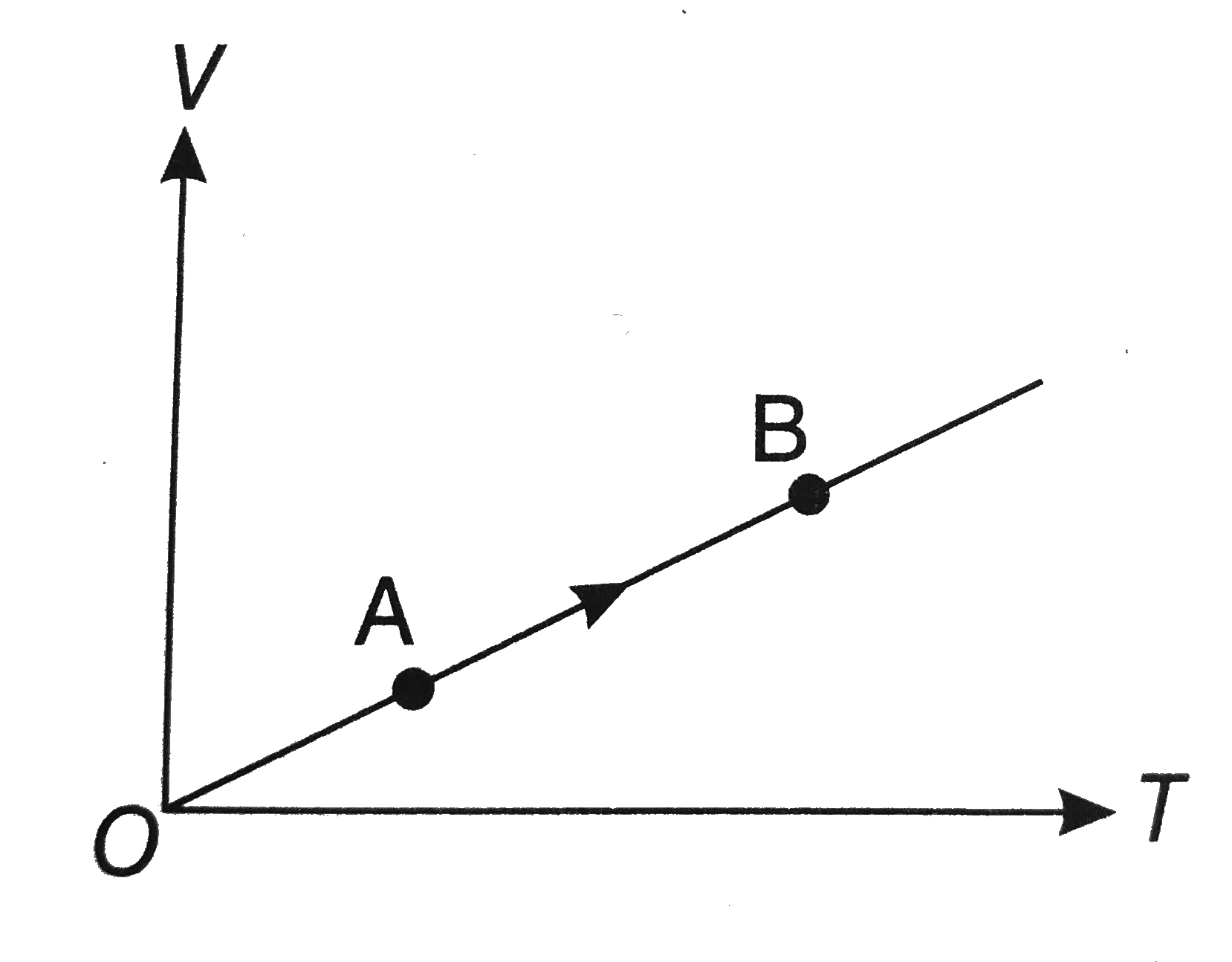 02:30View Solution
02:30View SolutionA sample of `0.1 g` of water of `100^(@)C` and normal pressure `(1.013 xx 10^(5) N m^(-2))` requires 54 cal of heat energy to convert to steam at `100^(@)C`. If the volume of the steam produced is 167.1 cc, the change in internal energy of the sample is
02:48View Solution
NEET Questions questions and complete solutions for chapter KINETIC THEORY OF GASES AND THERMODYNAMICS of A2Z PHYSICS (HINGLISH) of Class 11
